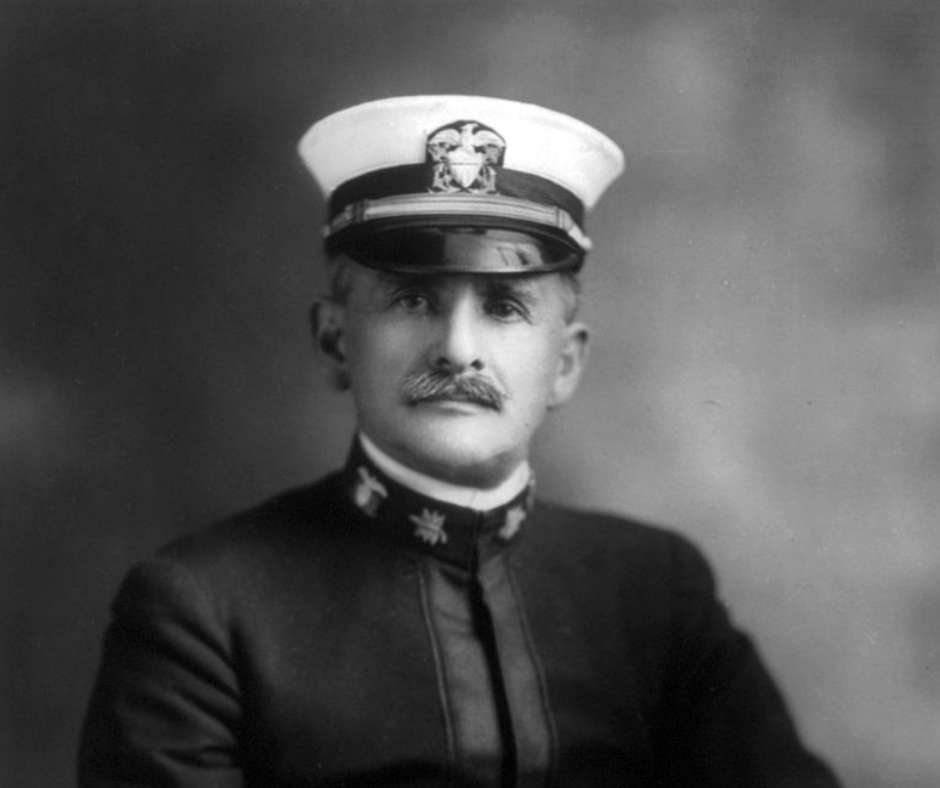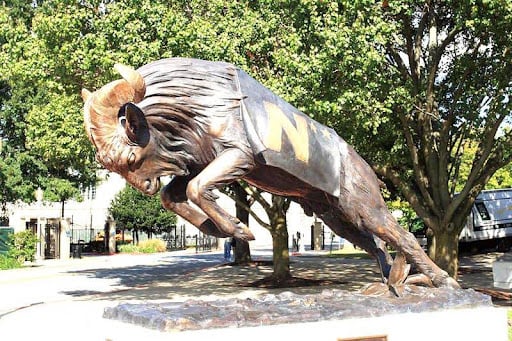Most famous for winning the Nobel Prize for Physics in 1907 for his precision optical instruments and the spectroscopic and metrological investigations they enabled, Albert Abraham Michelson is an important part of USNA history. The discovery that led to him garnering this top honor was made right here on the Yard. In fact, on April 12, 2024, the United States Naval Academy was designated as an American Physical Society’s (APS) Historic Site to recognize Michelson’s contributions, as well as the history–making USNA experiment. Further, he was the first American to receive the Nobel prize in the sciences and became one of the world’s most distinguished physicists. This is his fascinating story.
Related: USNA Named APS Historic Site in Recognition of Michelson’s Speed of Light Measurement.
Early Curiosity
Born in Strelno, Prussia (which is now Poland) in 1852, Michelson’s family moved to Virginia City, Nevada, when he was two years old, and eventually settled in San Francisco. The young Michelson demonstrated great curiosity early on with a relentless pursuit of knowledge. His prodigious scientific talents were noted by his teachers, and he was appointed by President Grant (whom he had personally met) to the U.S. Naval Academy in 1869, where he quickly proved his mental aptitude.
At a time when the Academy’s primary focus was naval training, Michelson’s quest for scientific exploration earned him high marks in math and physics, and his Naval Academy instructors noticed his talent and encouraged him in his endeavors. He graduated ninth in his class in 1873 and was commissioned as an ensign in the West Indies on a two-year cruise. When he returned, he became an instructor in physics and chemistry at USNA under Admiral Sampson, where he worked until 1879.
Chasing the Speed of Light
It was the speed of light calculation that made him world-famous, and he conducted it while working at USNA from 1877-1879. The first measurement was 200 times more accurate than existing measurements. He determined the velocity of light to be 186,325 miles per second, which held true as the standard until Michelson recalculated it before his death in 1931 at 11 miles per second less than the value we use today (186,287 miles per second). Due to his success, the International Committee of Weights and Measures asked Michelson to measure the standard wavelength distance of cadmium light in 1893.
“I love the story of Michelson,” says Naval Academy Provost Samara Firebaugh. “When I taught instrumentation and measurement with the Naval Academy Electrical Engineering Department, I would take my class over to walk the path where the speed of light was measured along the old sea wall of the Naval Academy. I would tell them to think about time and space, the mystery of this former graduate and instructor who performed this experiment, the connection to their own education about instrumentation and measurements, and the importance of those topics to the Navy then and today.”
This experiment was also unique because it was conducted with the students, and not in an isolated laboratory. Firebaugh also noted, “My favorite thing about him is that the work he did that won him the Nobel Prize, and that earned this recognition today, was not done at the top of an ivory tower, but as part of classroom instruction to midshipmen in the wonders of physics. This history captures what we seek in our classrooms today, this combination of military professionalism and scholarly expertise, which we have cultivated in our faculty since the founding of this institution in 1845.”
Reimagining the Laws of Physics
Michelson continued to make remarkable measurements of the velocity of light and invented his interferometer in 1881 to discover the effect of the Earth’s motion on the observed velocity. This instrument split the beams of light in two and put them on different paths until they recombined. Any time the light waves became unsynced, they would generate interference fringes or alternating light and dark bands. He could then calculate very accurate measurements from the width and number of fringes. Michelson and Professor Edward W. Morley used the interferometer to demonstrate that light travels at a constant speed no matter which direction it travels in. This allowed them to measure distances using light wave-lengths with unprecedented accuracy.
Michelson is also credited with inventing the echelon spectroscope and researched devices for naval use during World War I. He even created a rangefinder that the U.S. Navy integrated into their equipment. He was exceptionally devoted to detail, which set him apart as an emerging genius in the field.
Another famous experiment, the Michelson-Morley experiment, wasn’t conducted until 1887, but played a large role in shaping our understanding of the fundamental principles of physics - especially with regards to the constancy of the speed of light and the concept of relativity. This one changed the course of physics. Because the results were negative, they determined the Earth’s velocity relative to the ether (something that was commonly believed to fill the space outside the atmosphere) did not correlate, and therefore ether did not exist. This conclusion shook the physics world and made physicists rethink the basic tenets of physics, which led to Einstein’s 1901 world-famous Theory of Relativity.
Awards and Honors
Michelson was a prolific contributor to scientific periodicals, and his most well-known are “Velocity of Light” (1902), “Light Waves and their Uses” (1899-1903) and “Studies in Optics” (1927).
He received many honors for his work, including memberships in many learned societies throughout America and ten European countries, and honorary science and law degrees from ten American and foreign universities. He served as president of the American Physical Society (1900), the American Association for the Advancement of Science (1910-1911), and the National Academy of Sciences (1923-1927), among other important roles.
He also received numerous awards, including the Matteucci Medal (Societá Italiana, 1904), Copley Medal (Royal Society, 1907), Elliott Cresson Medal (Franklin Institute, 1912), Draper Medal (National Academy of Sciences, 1916), Franklin Medal (Franklin Institute), the Medal of the Royal Astronomical Society (1923) and the Duddell Medal (Physical Society, 1929).
As he progressed in his career, Michelson embodied the character and values instilled in him at the Academy, including his great sense of discipline, camaraderie, and duty, all of which informed his work throughout his life.
Visit the Yard
We are grateful to Michelson and his enormous contributions to science and to USNA history. You can come see where history happens every day here on the Yard. Just as you can visit the location of his world-changing experience, you can see the very places where Michelson and other USNA notable graduates lived and worked. When you take a USNA tour, dine on the Yard or make a purchase here, you’re supporting the midshipmen that support our freedoms; all funds go to their extracurricular activities like cultural arts, music, theater, club sports, and more. Be a part of USNA history and visit today!
-1.png)





-1.jpg)




